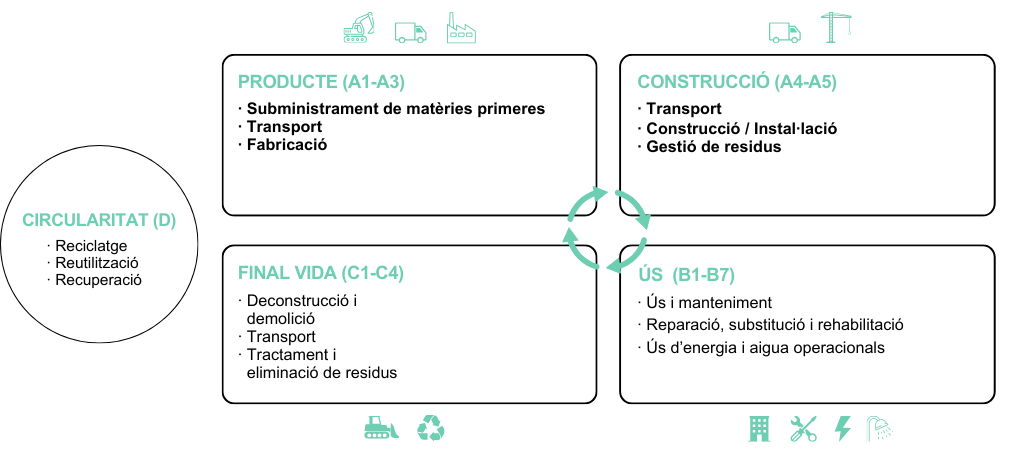Propers Actes

Introduction
The COAC makes available to its members the Carbon footprint calculation tool, an instrument promoted by AuS and developed in collaboration with ITeC that will allow architecture professionals to know the CO2 emissions generated by their architectural project.
The tool is launched at a key moment, months after the approval of the new version of the Energy Efficiency of Buildings Directive, which pursues the decarbonization of buildings throughout their entire life cycle and introduces the indicator of the Global Warming Potential of the building (GWP).
Registration
To access the tool, you must first register on the ITeC website. It is essential that the registration is done with the same email address that is reported to the COAC. Activation may take a few hours.
It should be noted that this sector is responsible for a large part of the environmental impacts of our society. And between 10 and 12% of total CO2 emissions correspond to the manufacturing stage of the materials we use in construction (initial embedded carbon).
The tool has a dual objective: on the one hand, it aims to train and inform architects about the environmental impact of architectural projects and offers a first approach to calculating the carbon footprint, an aspect that will be mandatory in the coming years. On the other hand, it offers them information so that they can begin to make decisions that consider reducing emissions.
In short, it is a continuous process in which different applications will be developed, each time with more detailed information and greater impact on the design process throughout the life cycle of our projects.
In this first stage, two applications are presented that represent this first approach to calculating the carbon footprint and that have a clear educational and informative purpose.
In a first phase, based on the data that is already commonly used for the Housing statistical sheet of the Generalitat de Catalunya, we will receive the administrative document itself and at the same time a report of the corresponding carbon footprint.
In a second phase, also in an approximate way, but already from the introduction of the measurements of our project on a fixed list of items for different chapters of the building, we will be able to know the environmental impact of the materials used.
To carry out the calculations, you only need to enter a few parameters and, based on a simple evaluation, you will obtain the CO2 equivalent emissions (kg) per m2 of usable surface area of the material extraction and manufacturing phases (A1-A3) and of the construction phase (A5). This is the reference indicator, which results from the Level(s) methodology, the EU common framework of basic sustainability indicators in construction and in European life cycle regulations.

The tool uses environmental data from the ITeC's BEDEC bank, recognized as a reference database by the Joint Research Center (JRC) of the European Commission.
In the initial phase of this tool, it is not expected to have reference values on which to compare the results we obtain with our buildings since, precisely, one of the objectives is to be able to collect data to establish them in accordance with the quality of the information that we are introducing into the process. Comparing with data from studies that have been obtained with methodologies different from the one proposed here can lead to errors or confusion.
Although at this first level the possibilities of introducing improvements are limited, it is necessary to start taking into account the main strategies for reducing impact, which are basically two. On the one hand, the reduction of the amount of resources used through efficiency and optimization in the design of the needs, the program or the constructive solutions. On the other, the use of low carbon footprint materials, such as biospheric or decarbonized (earth, wood and other plant derivatives, among others), recycled and recyclable materials, those manufactured with renewable energies, etc. It is also necessary to take into account other strategies such as durability and maintenance, as well as design from adaptability and deconstruction.
In any case, whenever possible, it is recommended to carry out rigorous and detailed comparative studies of the building and the constructive solutions that compose it through environmental data banks and/or Environmental Product Declarations.
